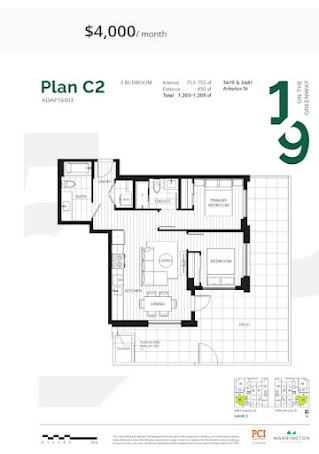I woke up today to the news that Canada ranks 44 out of 47 countries when it comes to our Artificial Intelligence (AI) literacy.
This reminded me of my early explorations of Chat GPT and other AI applications. Since I didn't know whether the information I was getting on various topics was correct, I decided to ask about something I knew about - me.
Below are the results. I am sharing this is to highlight the fact that while much of what I found was correct and oftentimes nicely written, some of the information could best be described as fake news.
So that you can experience AI firsthand, I recommend that you ask it about yourself to see how acccurate it is and whether there also is fake news. (You may need to offer a few prompts about your background to get the picture.)
Result Number 1
Michael Geller is a well-known architect, planner, real estate
consultant, and property developer based in Vancouver, Canada. He is the
president of The Geller Group, a consulting company that provides strategic
planning, real estate development, and urban design services to clients in both
the public and private sectors.
In addition to his work as a consultant, Geller is also a
frequent media commentator and public speaker on urban planning and development
issues. He has been involved in a number of high-profile projects in the
Vancouver area, including the redevelopment of the former Woodward's building,
the renovation of the historic Orpheum Theatre, and the planning and design of
the South False Creek Olympic Village for the 2010 Winter Olympics.
Geller has received numerous awards for his contributions to
urban planning and development, including the Distinguished Alumni Award from
the UBC School of Community and Regional Planning, the President's Award from
the Planning Institute of British Columbia, and the Queen Elizabeth II Diamond
Jubilee Medal.
I had absolutely nothing to do with the Orpheum Theatre.
"He has been involved with the planning and design of the South False Creek Olympic Village for the 2010 Winter Olympics."
While I was CMHC's project manager for South Shore False Creek in 1975, I was not involved with the planning and design of the Olympic Village (other than to sign a letter urging the city to pursue midrise, rather than highrise building forms.)
"Geller has received numerous awards for his contributions to urban planning and development, including the Distinguished Alumni Award from the UBC School of Community and Regional Planning, the President's Award from the Planning Institute of British Columbia, and the Queen Elizabeth II Diamond Jubilee Medal."
I did not received any of these awards. I didn't even attend the UBC School of Community and Regional Planning.
Result Number 2
Michael Geller is a Vancouver-based architect, planner, real
estate consultant, and property developer. He is well-known for his
contributions to urban design and planning, heritage preservation, and
affordable housing in Vancouver and throughout British Columbia.
Geller has been involved in numerous projects in the Vancouver
area, including the redevelopment of the Woodward's building, the restoration
of the Marine Building, and the creation of the False Creek North and South
neighbourhoods. He has also served as an adjunct professor at Simon Fraser
University, where he taught courses on real estate development, housing policy,
and urban design.
In addition to his work in Vancouver, Geller has been involved
in planning and development projects in other parts of Canada, as well as in
the United States, China, and Israel. He has been recognized for his
contributions to the field of architecture and planning, and has received
numerous awards and honors for his work.
Geller has been involved in numerous projects in the Vancouver area, including... the restoration of the Marine Building.
I had nothing to do with the Marine Building.
"In addition to his work in Vancouver, Geller has been involved in planning and development projects in other parts of Canada, as well as in the United States, China, and Israel."
I have not done any work in China or Israel.
Result Number 3.
Michael Geller is a prominent figure in urban planning,
architecture, and real estate development in Vancouver, British Columbia,
Canada. He is known for his extensive work in the fields of urban design,
sustainable development, and affordable housing.
Geller is an architect, planner, and real estate consultant with
over 40 years of experience. He has been involved in a wide range of projects
in Vancouver and other parts of Canada, including residential, commercial, and
mixed-use developments. He has also served as an adjunct professor at Simon
Fraser University and the University of British Columbia, where he has taught
courses on urban planning and real estate development.
In addition to his work as an architect and planner, Geller has
been an advocate for affordable housing and sustainable development. He has
been involved in numerous initiatives aimed at increasing the availability of
affordable housing in Vancouver, and has been recognized for his efforts in
this area.
Geller has received several awards for his contributions to
urban planning and design, including the Planning Institute of British
Columbia's Lifetime Achievement Award. He is a frequent speaker and commentator
on urban planning and real estate development issues, and continues to be an
influential figure in the field in Vancouver and beyond.
"Geller has received several awards for his contributions to urban planning and design, including the Planning Institute of British Columbia's Lifetime Achievement Award."
I didn't receive this award!
As a result of my early experiences with AI, I have learned to be very cautious when using the AI search results. That said, I think it is an extremely important field and was disappointed to see how low Canada ranks when it comes to being AI literate.
To learn more about AI, (in addition to searching yourself) I highly recommend Yuval Harari's latest book - Nexus. It will both inform and scare the hell out of you!
































